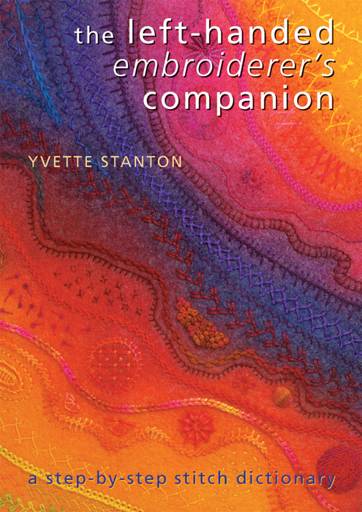Left-Handed Stitching
7TH AUGUST 2020 - ASU #246
Recently we received an email from a reader asking us about left-handed sewing tools. It caused a discussion here about which tools could be used easily and which offered more of a challenge depending on whether a stitcher was left or right-handed.
With International Left Handers Day coming up next week on the 13th August, we wanted to join in the celebration and specifically talk about all the left-handed stitchers out there.
 (source)
(source)
Before we begin, we need to disclose that none of us are left-handed here in the office, so we’re not writing from a position of experience. However, we know many wonderful left-handed stitchers, so some of the things we talk about come either directly from them or from our own experiences with them.
Left-handedness is something that appears in approximately 10% of the population. Unfortunately, because that number represents a minority, many things are not set up with left-handers in mind.
 (source)
(source)
However, luckily there is far more knowledge and acceptance of everyone’s differences nowadays, so left-handers aren’t quite as left out as they might once have felt.
We know of a stitcher who, as a child, was forced to ‘overcome’ her left-handedness as it was seen as something she was doing ‘wrong’.
She spent many painful and uncomfortable years trying to learn to be right-handed! We would hope that things are different today than they were 50 or 60 years ago, although the one good thing that came out of that horrible situation was that this lady is now very cleverly ambidextrous.
 (source)
(source)
Nevertheless, left-handed stitchers are often faced with scissors they can’t hold and stitch instructions that don’t make sense. This is not to mention teachers who want to help their left-handed students but find it hard to flip their guidance around.
 (source)
(source)
In terms of scissors, there are left-handed scissors now widely available. Sewing scissors, namely the type with a large and small loop for the handle and a very clear top and bottom blade, are generally the biggest problem. If you are left-handed there is a good chance you already own a pair designed especially for you, but for organisations or teachers who have scissors available for their members or students to use, having at least one pair of left-handed scissors available is important.
 Different scissors for different hands (source)
Different scissors for different hands (source)
As for embroidery scissors, a good quality pair should work equally well in whatever hand you use, as both blades are designed to be sharp and effective. Most of the other tools we use – needles, threaders, mellors and hoops – work whichever way they are flipped, although some cheaper hoops, with the screw on the right, aren’t as smooth when the top hoop is turned upside down to move the screw to the left.
As for stitch instructions, even we are aware that the photographs in our magazines and books show the workings for right-handers. One piece of advice we found was that, if an image was too difficult to translate, a left-hander could scan it and then flip it over in a simple image editing program. Someone else suggested looking at the image in a mirror.
However, from the left-handed stitchers we know, many of them are very adept at being able to imagine the instruction reversed. It is a skill they’ve developed when faced with little other choice.

Many left-handed stitchers would probably already be aware of Yvette Stanton’s wonderful book The Left-Handed Embroiderer’s Companion. It has become something of a bible for left-handers and we’ve seen many occasions where the book has been quietly brought out during a class to help the stitcher ‘get’ the stitch. However, if you’ve not come across it before, this book is fantastic for students and teachers alike.
 (source)
(source)
Plenty of teachers have found ways to get around the differences in dominant hands. Some have learnt to do stitches with both hands so they can demonstrate either way. Others, especially those teaching crochet or knitting, have tried to get their students to sit opposite them in order to copy, just as you would in a mirror.
Although, having had left-handed sewing teachers, we’ve found ourselves stuck with pins on a few occasions because when they’ve pinned our work, we’ve not realised till it’s too late that they do it the other way!
Luckily, we stitchers are wonderful people and moments such as these give us something to laugh about together.
Most of us will have had a giggle as we bump elbows with our opposite-handed stitching companion and then happily swapped around seats to make our stitching sessions more comfortable.
 (source)
(source)
Are you a left-hander? What challenges have you faced and how have you overcome them? What has made your stitching life easier? We’d love to hear about your experiences, as all of your stories increase the richness of our own journey and the wonderful diversity of people who practice it along with us.
News Just In
For anyone interested in Yvette Stanton’s book The Left-handed Embroiderer’s Companion referenced above, we have some good news. Copies of her ultimate step-by-step stitch dictionary for left-handers are now available to purchase from our website. Click below to buy your copy today.

